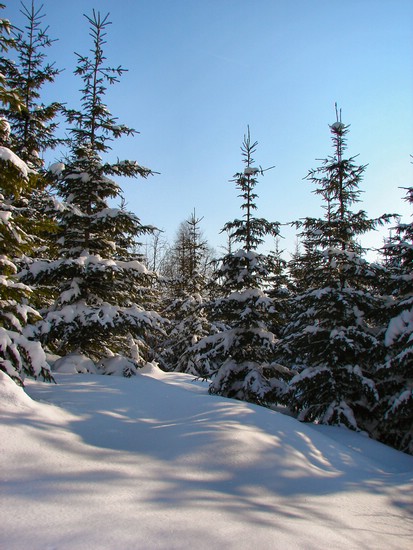 |
| Scenes like this only come with severe cold. |
A couple of years ago, I walked the Camino de Santiago de Compostela. It was a wonderful experience. It taught me how much walking I am actually capable of, which turned out to be a lot, and through my walk I felt that I almost became part of northern Spain and its hundreds of years of pilgrimage history.
I rarely visit the same place twice, if I can help it, but I confess to having thought about doing another walk to Santiago, preferably via one of the other old pilgrimage routes that end up there. Still, that would be fairly similar to my first walk, so I decided to look elsewhere for my next long walk.
The next obvious option was to walk to Rome and the Holy See. As it happens, there is an old pilgrimage trail leading there, the Via Francigena. It starts in Canterbury in England and after a long swim or boat ride it takes you through France, Switzerland and Italy. It sounds like an excellent alternative to anything Santiago, but I had never actually met someone who knew much about it, and absolutely no one who had walked it. That's usually a good reason for me to go somewhere and do it.
 |
| Click map to go to interactive version. |
I found a cheap flight to Milan and got on the first train south the next morning. It's a great start. Milano is busy, a grey and boring city for anyone not that interested in fashion. As you're about to go for a long walk, you'll probably be rather underdressed for this city, so you'll feel relieved when the train rolls out of the crazy huge Milano Centrale station.
An hour and a half later, I walked off the train in a small and cozy village in Parma. The town square was full of smiling, nicely rounded people, presumably all too familiar with parmesan cheese and Parma ham, enjoying ice cream and coffee on a hot early summer day. It was a great place to begin a walk.
I got my pilgrim's passport, my credenziali, quickly sorted at Casa Cremonini, right next to the cathedral. I acted as clueless as I could, since it was fairly clear that so were they. Granted, it was easier for me, because my Italian is really bad, but still... I expected them to be a little bit like the people who help pilgrims get started in Saint Jean Pied-de-Port for the Camino de Santiago. They aren't.
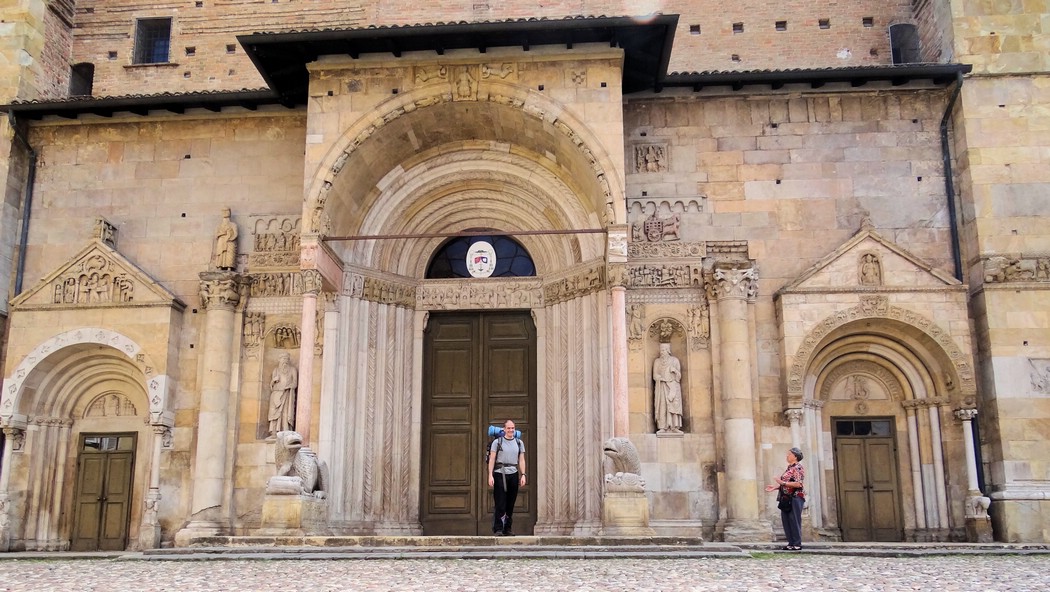 |
| An old lady witnessed me departing on my walk and decided to applaud it. |
And it wasn't! It took me two minutes to realize that compared with Camino de Santiago's friendly yellow arrows pointing out which way to go and not to go at every possible and impossible turn, often even on straight roads with deep ditches on each side, Via Francigena has little or nothing to help you.
I got lost four times before I even left the town of Fidenza. The only way to keep on track was to rely on the GPS trail I had bought from a money-minded pilgrim before leaving home. Do not leave home to walk Via Francigena without something like that to guide you. The good news is that if you start your walk from Fidenza or further south, you can just download my trail for free. I'd venture to say that my track is even better than the one I bought, as I found many places where the trail had been moved and/or where I could walk more safely, a bit away from the roads where insane Italian drivers seek out people to mow down.
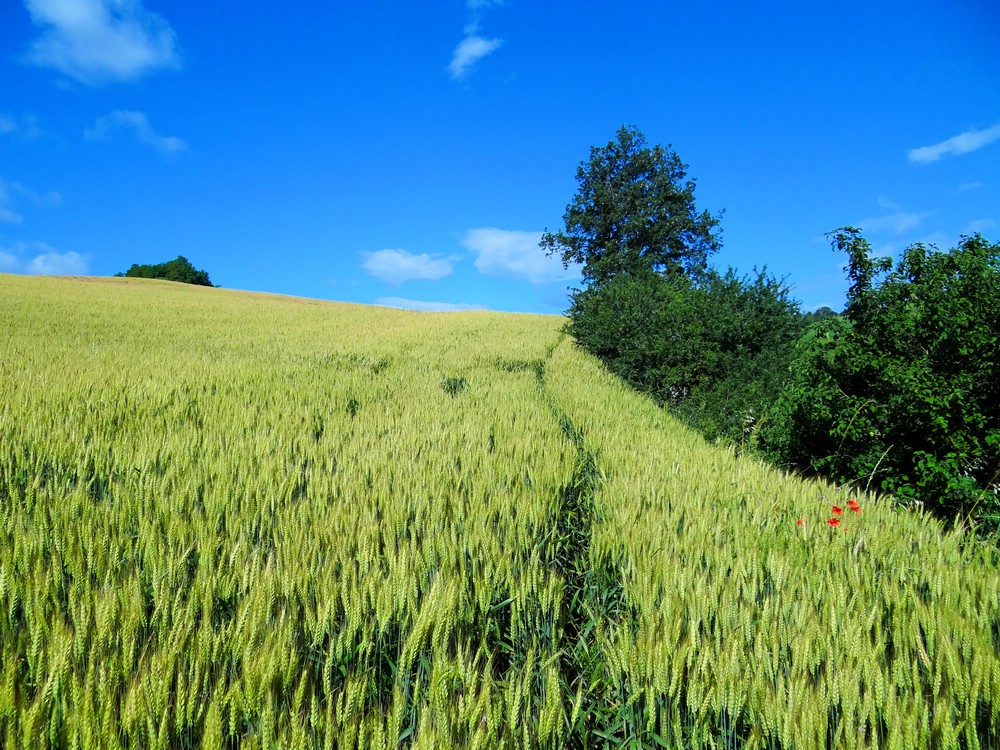 |
| That narrow line in the field, that's Via Francigena. I'm not joking. |
Today the Via Francigena is a strange labyrinth through and around an infinite number of fields and farms separating you and Rome. The detours you're sent out on are frustratingly many. My first (half) day of walking took me from Fidenza to Medesano. As the crow flies, that is 13.5 kilometres. If you drive, it's 18 kilometres. My walk was... 26 kilometres! (Not including the bits where I got lost.) It's not as bad as that every day, but it feels like it. Especially when it's 40+ degrees out.
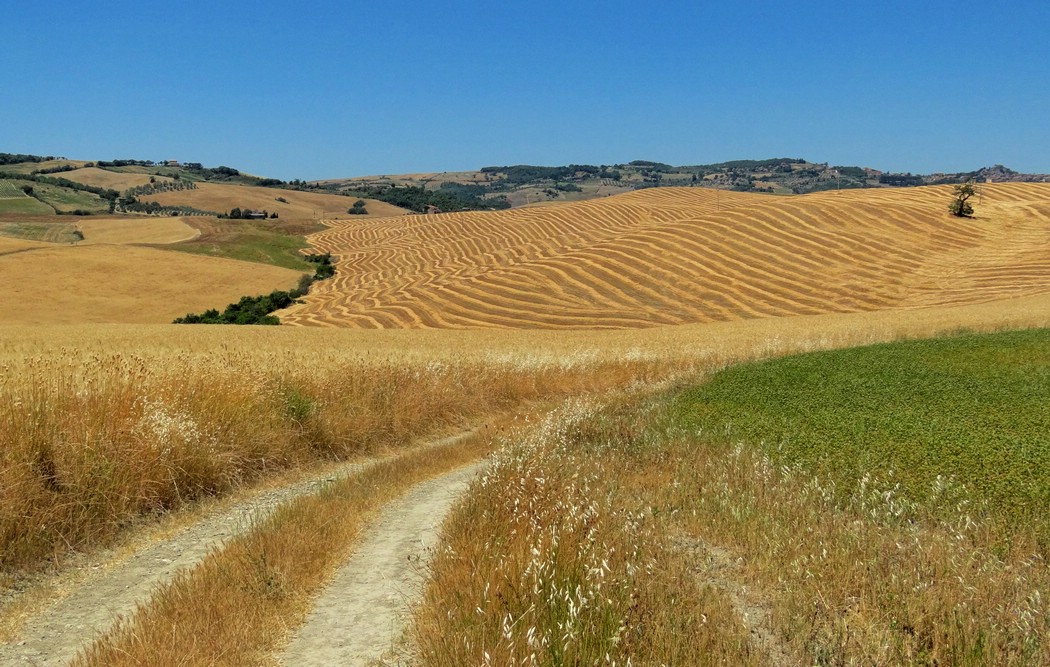 |
| Fields south of Siena, near San Quirico D'Orcia. |
So, with there being close to no pilgrims on the trail, there aren't many places for pilgrims to sleep either. Some towns have a hostel for pilgrims, most don't. If there is a place, and if you have the address, you'll often find that it's closed, and that there is no one around that knows anything about it. While there are a few amazing exceptions to the rule, most nights you will have to sleep either for free in the woods with no facilities at all, or you treat yourself to a hotel with more facilities than you care for, at a price much higher than you have budgeted for. The 10-20 euro level of great pilgrim's hostels typically available with a few kilometres between them along the Camino de Santiago are just about nowhere to be found in Italy.
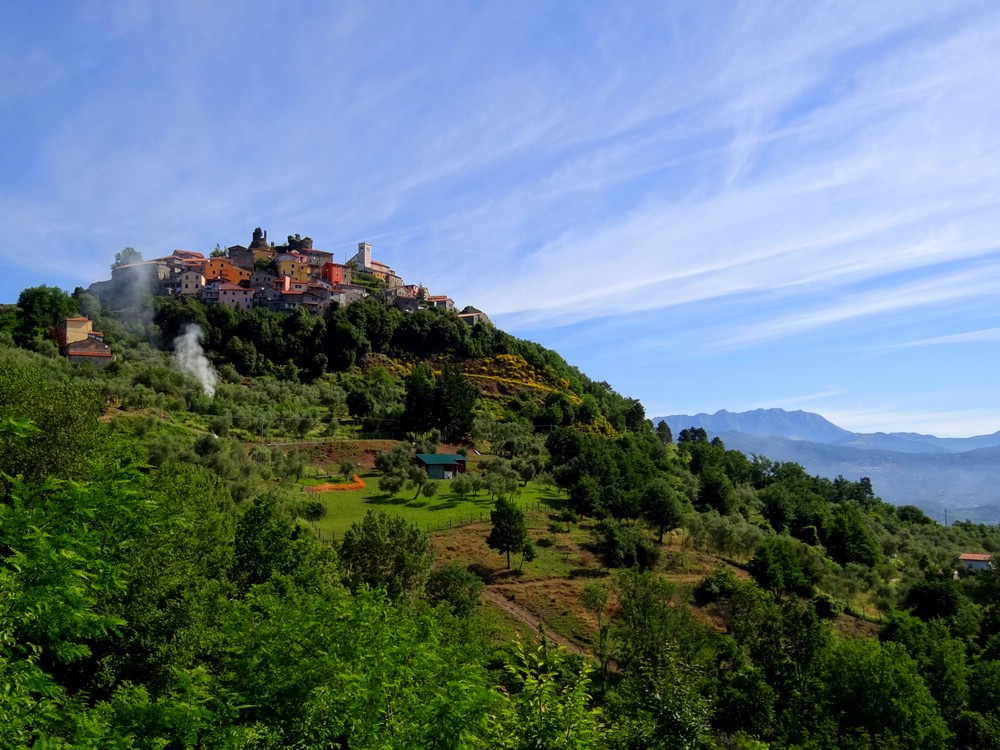 |
| Bibola was a long time ago put up on a hill to avoid plunderers and malaria. |
- The late night pizza place in Medesano.
- The medieval hamlet of Castello di Casola with the dramatic valley backdrop.
- Crossing the Appennines at the Passo della Cisa.
- Ice cream in Villafranca In Lunigiana.
- Bibola! Oh, Bibola, the most photogenic village imaginable.
- Observing rich Italians, obscenely tanned and even more obscenely dressed, enjoying themselves in Pietrasanta's night clubs and discos.
- The names of famous vines suddenly appearing as vineyards next to the path.
- Lush farmland.
- Enchanting old Viterbo, beautifully falling down.
- A most wonderful amble through a narrow strip of old forest before Sutri.
- Walking through the old and badly maintained park on Monte Mario, and suddenly have Saint Peter's Basilica visually scream at you.
Via Francigena in its current condition can never be recommended ahead of the Camino de Santiago. It's missing the facilities. It's missing the fellowshop on the trail. It's missing the bargain prices for food and lodging. It's plain out dangerous, offering way too intimate encounters with ferocious dogs and mindless drivers.
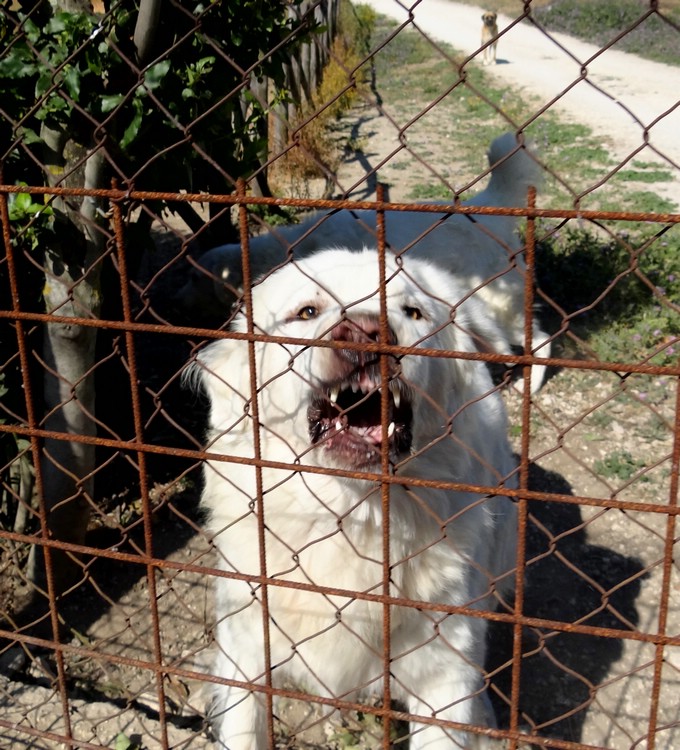 |
| Annoying dog. I like his pal in the back much better. |
My favourite parts were these walking days:
- From Fidenza to Medesano. Beautiful farmland.
- From Cassio to Berceto and across the Appennines to Pontremoli. Nice mountains.
- From Aulla to Sarzana, especially the first bit, including passing Bibola.
- From Gambassi Terme to San Gimignano. Pleasant Tuscany farmland.
- From San Quirico D'Orcia to Radicofani. The entire day is full of wonderful scenery.
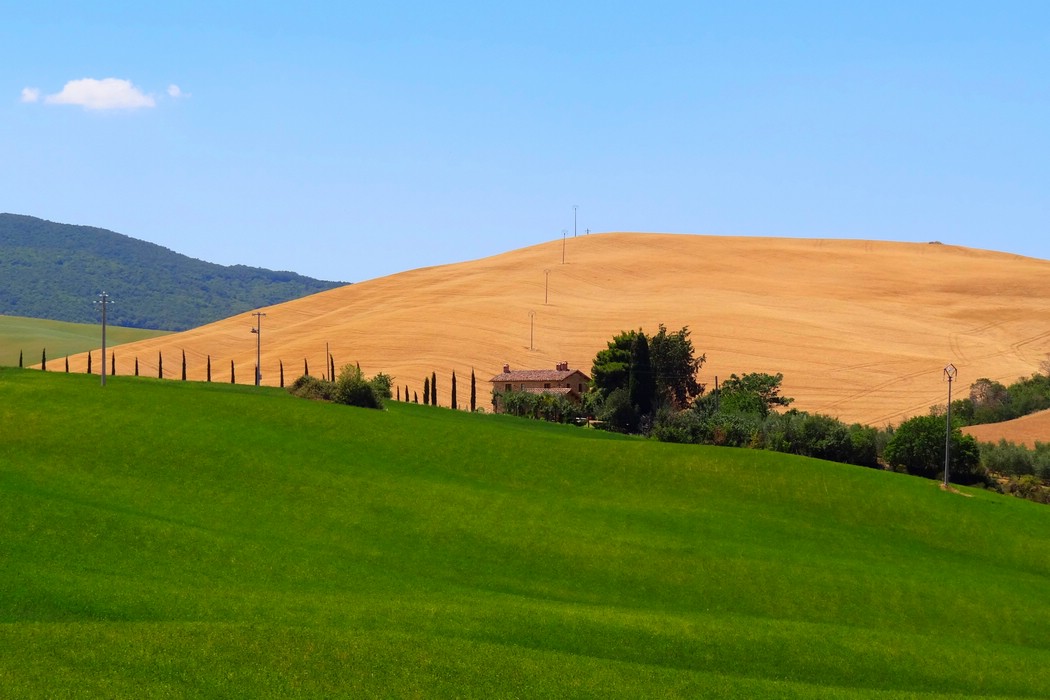 |
| I saw a lot of this. |
- The pilgrim hostel in Cassio. It's probably closed, but go to the bar up the road, they'll summon the keymaster for you.
- The pilgrim hostel in Radicofani. Just like the Camino de Santiago ones, with volunteers and all.
- Pieve di Santa Maria Assunta a Chianni, just before Gambassi Terme. Nicely restored lodging in the back, and they're open.
- Bed & Breakfast Monticelli, just after Capranica. Very friendly people despite being only option.
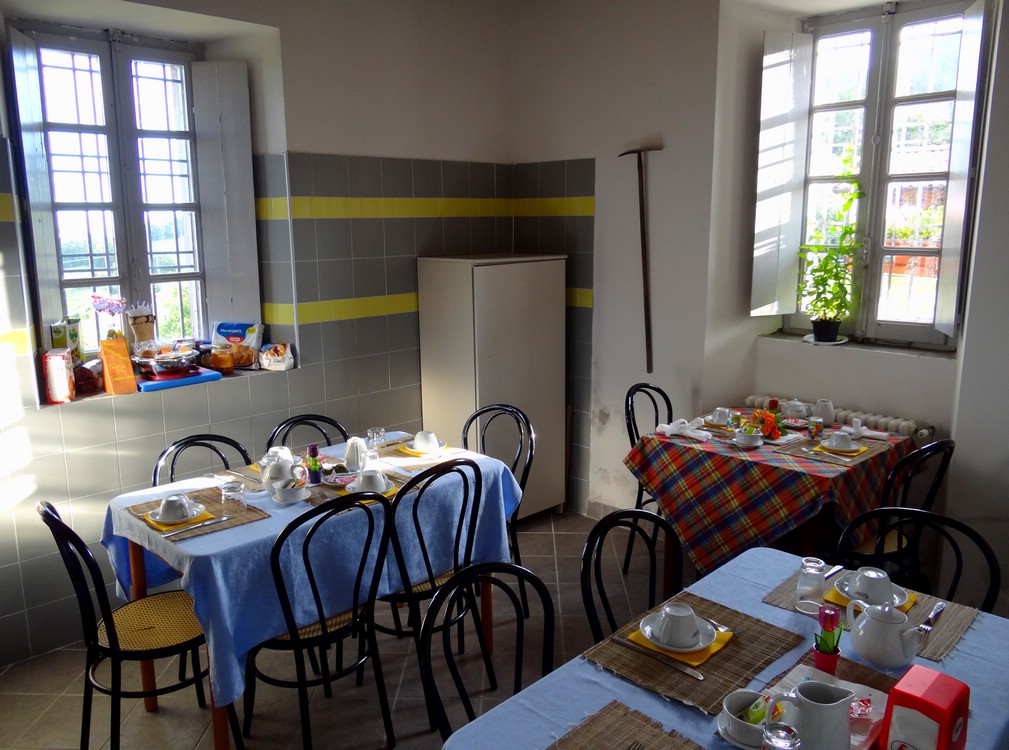 |
| I was the only one there, but the hostel in Cassio still served breakfast for me and my imaginary friends. |
So there you have it. You can find more of my photos from the walk here. If you think I'm wrong about anything at all, do not hesitate to inform me. Also, if there's anything else you'd like to know, just ask in the comments!
Happy trails!
3 comments:
Your post was funny, interesting, and cool. Great writing. Thanks for all the tips!
Hi. I see you carry a Mat.
Is the sleeping bag and Mat required on via Francigena?
On the Camino de Santiago a Mat is really optional.
Thanks.
Hi Evan,
I generally always carry a mat, just because I know that sometimes I will not find a better place to sleep than wherever I am when it starts getting dark. Then I just sleep on the ground, on my mat. :)
There are no particular requirements on Via Francigena. It is VERY difficult to find a "refugio" on this route compared to on Camino de Santiago. You must generally book/phone ahead to the places where you want to sleep, or you may arrive there and discover that no one is there to greet you, and the doors are locked. I often had to sleep in some kind of hotel on my walk...
Post a Comment